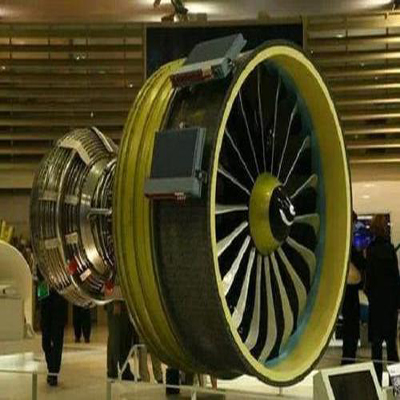- Home
- Products
- Elementary
- Boride Powder
- 3D Printing Powder
- Sulfide Powder
- Oxide Powder
- Carbide powder
- Nitride Powder
- Silicide Powder
- Hydride Powder
- Telluride Powder
- Selenide Powder
- Stearic Acid Series
- Phosphide Powder
- Nanoparticles
- Metal Alloy
- MAX Phase
- Lithium Battery Anode
- Surfactant
- Molecular sieves
- Concrete Admixtures
- News
- Answers
- Contact
- About
About Silicon Carbide Ceramics Some Things You Dont Know
Silicon carbide ceramic properties
Silicon carbide ceramics have high solidity, high melting factor (2400 ℃), high wear resistance and also deterioration resistance, as well as exceptional oxidation resistance, heat strength, chemical security, thermal shock resistance, thermal conductivity and good air rigidity. And so, it has actually been widely made use of in power, metallurgy, machinery, oil, chemical, air travel, aerospace, defense and various other fields.

Black silicon carbide as well as eco-friendly silicon carbide: The rough industry repeatedly splits silicon carbide right into black carbonized laurel as well as environment-friendly silicon carbide according to shade, both of which are hexagonal crystals, as well as all come from α& alpha;
-SiC. Black silicon carbide includes about 98.5% SiC. Black silicon carbide is made from quartz sand, oil coke and also top notch silica as the main raw materials, and also is smelted by electric heater at heat. Its hardness is in between diamond and also diamond, the mechanical stamina is more than diamond, and it is fragile and also sharp. Its toughness is more than that of environment-friendly silicon carbide, and it is mostly made use of to process products with reduced tensile toughness, such as glass, porcelains, stone, refractory materials, cast iron and non-ferrous metals.
Environment-friendly silicon carbide contains even more than 99% SiC. Environment-friendly silicon carbide is made of petroleum coke and also top notch silica. It is included with salt as an additive and is heated by high temperature heater. It is self-sharpening as well as is primarily made use of for machining hard alloys, alloys and optical glass. It is also utilized for wear-resistant cylinder liners as well as fine-grained high-speed steel devices.

Silicon carbide ceramic usage: The solid covalent bond of SiC is the source of a series of excellent properties of SiC ceramics, yet it likewise brings problems in sintering. The covalent bond is too solid, which prevents the sintering densification of SiC porcelains. Therefore, the sintering temperature has to be increased., which enhances the price and limits its application in sector.
From the perspective of thermodynamics, the reduction of free energy triggered by the cluster of the initial powder during sintering is the major driving pressure for densification. However, the totally free power of the SiC grain limit is reasonably high, causing a reduction in the totally free energy of the powder even if the agglomeration becomes a solid-solid user interface from the solid-gas user interface. The smaller sized the cost-free energy distinction is, the smaller the driving pressure of the sintering process is. As a result, the SiC powder is harder to be sintered than other ceramics. The present usual technique is to include sintering aid, minimize the original powder bit size and also pressurize. Change its free power and advertise the densification of SiC.
From the perspective of kinetics, the main mass transfer mechanisms in the sintering procedure are: dissipation and condensation, viscous circulation, surface area diffusion, grain boundary or latticework diffusion as well as plastic contortion. The solid covalent bond of SiC leads to slower solid-phase mass transfer rate such as latticework diffusion as well as surface area diffusion, while gas stage mass transfer calls for heat to promote powder decay. The disintegration temperature level of SiC is up to 2500 °& deg; C, so relying upon gas phase mass transfer to realize porcelains Densification is impossible. As a result, the existing sintering process primarily accomplishes the viscous circulation by adding a sintering aid to boost the strong stage diffusion price of SiC or to develop a viscous liquid glass phase-assisted SiC.

SiC porcelains are extremely pure and also can raise the thermal conductivity of SiC ceramics without various other contaminations. Nonetheless, in the sintering procedure, sintering aids must be presented to lower the sintering temperature level and also increase the thickness. Exactly how to resolve the contradiction between the two is the sintering of high thermal conductivity SiC ceramics. Difficulties and priorities.
Al2O3 ceramics have reasonably reduced sintering temperature level, reduced price as well as great electrical insulation efficiency. They have been commonly used, however their thermal conductivity is low, and their application in high-power circuits is restricted.
BeO ceramics have good dielectric residential or commercial properties and also are utilized as high-heat-conducting substrate materials in some areas. Nonetheless, because of the poisoning of BeO, Europe, the USA, Japan and other locations have actually started to issue regulations restricting the sales as well as advancement of electronic items consisting of BeO.
AlN ceramics have outstanding thermal and also electric insulation and also reduced dielectric constant, making them appropriate for high power circuits. However, the sintering temperature of AlN ceramics is too expensive, causing a complicated prep work procedure and high price, and has not undergone massive manufacturing as well as application. And AlN is prone to hydrolysis reaction, and also its reliability is poor in damp settings.
SiC ceramics have reduced density, high mechanical stamina, good oxidation resistance, use resistance, outstanding thermal shock resistance, little thermal development coefficient as well as high thermal expansion coefficient matching with the chip. They are immune to chemical corrosion and also have good growth in the area of digital items. As well as the application potential customers can satisfy the requirements of high performance, tiny dimension, light weight as well as high reliability of electronic devices in the future.
Luoyang Tech Co., Ltd is an expert Silicon carbide ceramic supplier with over 12 years experience in chemical products r & d. If you are searching for high quality Silicon carbide ceramic, please do not hesitate to call us and send a query.
Inquiry us
NEXT NEWS